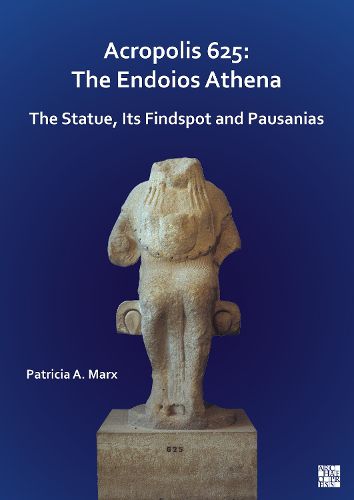Readings Newsletter
Become a Readings Member to make your shopping experience even easier.
Sign in or sign up for free!
You’re not far away from qualifying for FREE standard shipping within Australia
You’ve qualified for FREE standard shipping within Australia
The cart is loading…






Acropolis 625: The Endoios Athena is an interdisciplinary in-depth study of an important Archaic statue of Athena, carved in c. 525 BC. The author's detailed examination reveals that, unlike earlier seated statues, it is an active figure. For this reason the right stool seat was pieced on by the sculptor himself. The author deduces that the goddess was a fully armed image of Athena Polias as defender of the city-state. Having escaped destruction during the Persian Invasion of c. 480-79 BC, the statue sustained severe damage in Late Antiquity, most likely during the Herulian Invasion of c. AD 267. Afterwards it was built into a memorial wall on the north slope of the Acropolis, right side up and facing forward. This wall was placed directly below that portion of the north citadel wall containing part of the entablature of the Late Archaic temple of Athena Polias destroyed by the Persians. The Endoios Athena was seen by Pausanias in c. AD 150-55, and he mentions it directly prior to the Erechtheion. Pausanias's route on the top of the Acropolis citadel and the various suggestions for the location of the Erechtheion are examined in detail. The author opts for the traditional interpretation that the Erechtheion was located in the Karyatid Temple and offers an educated guess as to where Pausanias saw the Endoios Athena.
$9.00 standard shipping within Australia
FREE standard shipping within Australia for orders over $100.00
Express & International shipping calculated at checkout
Acropolis 625: The Endoios Athena is an interdisciplinary in-depth study of an important Archaic statue of Athena, carved in c. 525 BC. The author's detailed examination reveals that, unlike earlier seated statues, it is an active figure. For this reason the right stool seat was pieced on by the sculptor himself. The author deduces that the goddess was a fully armed image of Athena Polias as defender of the city-state. Having escaped destruction during the Persian Invasion of c. 480-79 BC, the statue sustained severe damage in Late Antiquity, most likely during the Herulian Invasion of c. AD 267. Afterwards it was built into a memorial wall on the north slope of the Acropolis, right side up and facing forward. This wall was placed directly below that portion of the north citadel wall containing part of the entablature of the Late Archaic temple of Athena Polias destroyed by the Persians. The Endoios Athena was seen by Pausanias in c. AD 150-55, and he mentions it directly prior to the Erechtheion. Pausanias's route on the top of the Acropolis citadel and the various suggestions for the location of the Erechtheion are examined in detail. The author opts for the traditional interpretation that the Erechtheion was located in the Karyatid Temple and offers an educated guess as to where Pausanias saw the Endoios Athena.